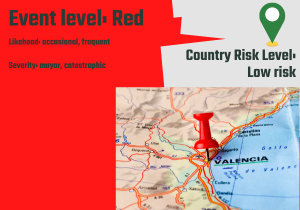
El servicio de Alta Velocidad entre Valencia y Madrid ha sido suspendido temporalmente por un periodo estimado de entre dos y tres semanas, debido al daño de las infraestructuras provocado por la DANA. Algunas operadoras como Iryo informan que la cancelación de sus trenes está prevista, de momento, hasta el 10 de noviembre, aunque podrían prolongarse.
Se han restablecido todos los servicios de tren Euromed e Intercity en el recorrido entre Valencia y Barcelona, incluyendo las líneas de Cercanías C5 y C6. Las comunicaciones ferroviarias entre Valencia y Barcelona, por tanto, funcionan con normalidad, ofreciendo una alternativa para desplazamientos desde y hacia la región.
El sistema de Metrovalencia también sufre cortes y durante la semana del 4 al 10 de noviembre, no habrá servicio de metro. A partir del 11 de noviembre, la reactivación del servicio será progresiva: las primeras en reabrir serán las líneas de tranvía, mientras que las líneas 3, 5 y 9 lo harán en una segunda fase. Las líneas 1, 2 y 7 se recuperarán en una tercera etapa. Para suplir esta falta de servicio, se ha implementado un sistema de autobuses de sustitución, que operará hasta la normalización completa del metro.
En cuanto a la movilidad aérea, algunas aerolíneas han incrementado su capacidad en la ruta Valencia (VLC) – Madrid (MAD) con dos vuelos adicionales diarios. Esta medida, orientada a facilitar el desplazamiento de viajeros entre ambas ciudades, estará vigente, al menos, hasta el 10 de noviembre, cuando se evaluará la continuidad según las necesidades. Asimismo, se han habilitado tarifas más accesibles para los viajeros que tengan que desplazarse a esta región.
Los aeropuertos de la zona operan con normalidad y el acceso al aeropuerto de Manises (VLC) está operativo. No obstante, se aconseja a los viajeros que cuenten con tiempo adicional en sus desplazamientos.
Mientras, las condiciones en las carreteras de la provincia de Valencia siguen siendo complicadas debido a las inundaciones y la necesidad de rutas alternativas. La Dirección General de Tráfico (DGT) recomienda que los residentes y viajeros en la zona prioricen el uso del transporte público, los vehículos compartidos y, siempre que sea posible, el teletrabajo. Estas medidas buscan mantener despejadas las vías principales para el tránsito de servicios de emergencia y el suministro de bienes esenciales. Para una actualización en tiempo real de las vías afectadas y los desvíos, los viajeros pueden consultar el portal de información de tráfico de la DGT.
– Se aconseja a los viajeros verificar el estado de su tren o vuelo antes de partir hacia el aeropuerto o la estación.
– Se recomienda considerar rutas alternativas disponibles para conexiones urgentes entre Valencia y Madrid.
– Seguir las recomendaciones de la DGT para evitar zonas con cortes y, de ser posible, usar transporte público o compartir vehículo.
– Para aquellos viajeros que se encuentren en las zonas afectadas, se recomienda el uso de mascarillas, guantes de protección, botas de agua y ropa de manga larga para evitar infecciones.
Este operativo especial está diseñado para minimizar el impacto en la movilidad de los viajeros y garantizar el acceso seguro a las zonas afectadas hasta que se normalice la situación.
Spain. Flooding in Valencia affects rail, land and air services.
The Valencia and Madrid high-speed rail service has been temporarily suspended for an estimated two to three weeks, due to the damage to infrastructure caused by the DANA. Some operators such as Iryo report that their trains are scheduled to be cancelled until 10 November, although this could be extended.
All Euromed and Intercity train services have been restored on the route between Valencia and Barcelona, including Cercanías lines C5 and C6. Rail links between Valencia and Barcelona are therefore operating normally, offering an alternative for journeys to and from the region.
The Metrovalencia system is also being disrupted and during the week of 4 to 10 November, there will be no metro service. From 11 November, the service will be reactivated progressively: the first to reopen will be the tram lines, while lines 3, 5 and 9 will do so in a second phase. Lines 1, 2 and 7 will be recovered in a third phase. To make up for this lack of service, a replacement bus system has been implemented, which will operate until the metro is fully normalised.
As for air mobility, some airlines have increased their capacity on the Valencia (VLC) – Madrid (MAD) route with two additional daily flights. This measure, aimed at facilitating the movement of passengers between the two cities, will be in force at least until 10 November, when continuity will be assessed according to needs. More affordable fares have also been made available for passengers travelling to the region.
Airports in the area are operating normally and access to Manises airport (VLC) is operational. However, travellers are advised to allow extra time for their journeys.
Meanwhile, road conditions in the province of Valencia remain difficult due to flooding and the need for alternative routes. The Directorate General of Traffic (DGT) recommends that residents and travellers in the area prioritise the use of public transport, carpooling and, whenever possible, teleworking. These measures aim to keep the main roads clear for the transit of emergency services and the supply of essential goods. For a real-time update on affected roads and diversions, travellers can consult the DGT traffic information portal.
– Travellers are advised to check the status of their train or flight before leaving for the airport or station.
– It is recommended to consider alternative routes available for urgent connections between Valencia and Madrid.
– Follow the recommendations of the DGT to avoid areas with road closures and, if possible, use public transport or carpooling.
– For those travellers in the affected areas, the use of masks, protective gloves, waterproof boots and long-sleeved clothing to avoid infection is recommended.
This special operation is designed to minimise the impact on travellers’ mobility and ensure safe access to affected areas until the situation returns to normal.
